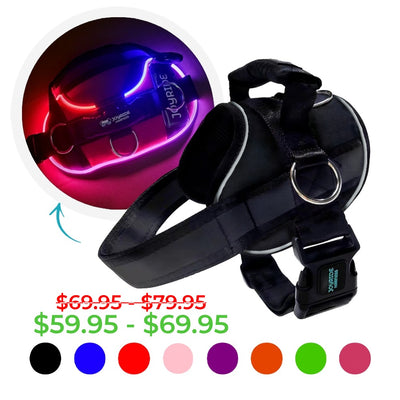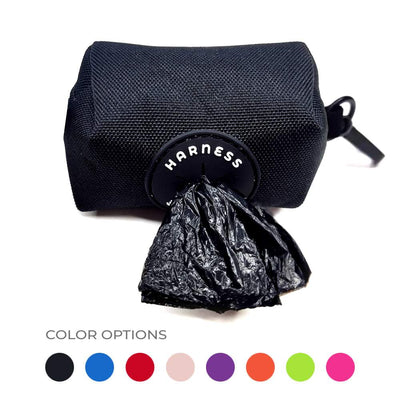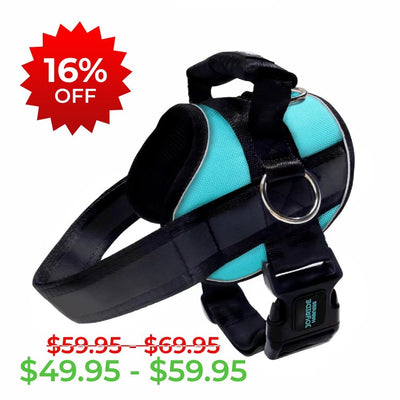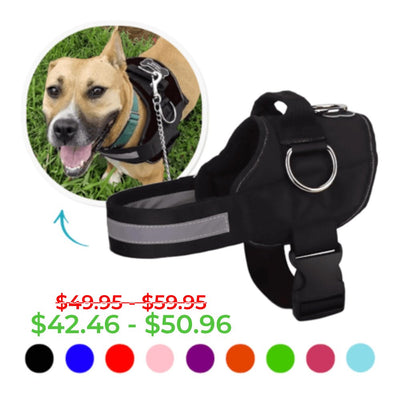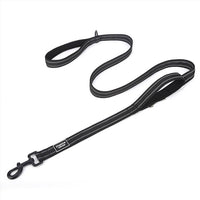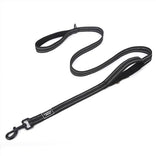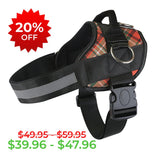Harness vs. Collar: The Shocking Truth Revealed!

When you go for a walk, what do you clip the leash to? A collar, or a harness? It’s a choice that not every pet owner thinks about all that much. The harness versus collar debate has been ongoing for years. Each has its purpose, and making the right choice for your beloved pet requires careful consideration.
Choosing a Collar

Collars have been the traditional choice for pet owners for generations. They are simple, easy to use, and come in various styles, from nylon webbing to leather.
Pros of Collars
- Identification and Tags: Collars provide an ideal place to hang identification tags with essential information, such as your pet's name, your contact details, and proof of vaccination. This can be crucial if your pet ever gets lost.
- Daily Wear: Collars are suitable for everyday use. They're lightweight and unobtrusive, making them comfortable for your pet to wear throughout the day.
- Budget-Friendly: Collars are often more affordable than harnesses, which can be a significant advantage if you're on a tight budget.
- Choking Hazard: One of the most significant drawbacks of collars is that they can pose a choking hazard, especially for dogs that tend to pull or have respiratory issues. Pressure on the neck can cause injuries or exacerbate existing health problems.
- Limited Control: Collars provide limited control, making it challenging to manage dogs that are prone to pulling, lunging, or escaping. This can be particularly problematic during walks or when encountering distractions.
- Risk of Injury: If not properly fitted or if too much force is applied, collars can lead to injuries like neck strain, tracheal damage, or even eye problems, particularly in dogs with big eyes, like Pugs, King Charles Cavalier Spaniels, and Boston Terriers.
- Escapability: Some dogs are skilled escape artists and can slip out of their collars with relative ease, especially if they have a smaller head compared to their neck size.
Choosing a Harness

Harnesses have gained popularity in recent years, offering an alternative to traditional collars. They distribute pressure more evenly across the dog's body, which can be particularly beneficial for certain breeds and situations.
Pros of Harnesses
- Safety: Harnesses are safer for dogs, especially those that like to pull and those with delicate necks, like toy breeds. By distributing the pressure evenly across the chest and back, harnesses reduce the risk of injury, including choking or tracheal damage.
- Control: For dogs that are difficult to manage on walks, harnesses provide better control and prevent them from lunging or pulling. This makes them ideal for training and preventing injuries to both the dog and the owner
- Comfort: Most dogs find harnesses more comfortable than collars, as they eliminate pressure on the neck.
- Reduced Escapability: Harnesses are more challenging for dogs to slip out of, providing greater security during walks and outings.
- Limited ID Space: Unlike collars, most harnesses don't offer a convenient place to hang identification tags. Pet owners may need to use an additional collar or a tag attachment to display vital information.
- Training Challenges: Some dogs may resist harnesses initially, making it necessary to introduce them gradually to ensure they feel comfortable wearing one.
- Price: Quality harnesses can be more expensive than collars, and this initial investment can deter some pet owners.
What Do Vets Say?

Since injury is such a concern with collars, many vets recommend walking your dog with a harness. For more information, check out what Dr. Lisa Lippmann DVM has to say in our article and video.
Making The Right Choice
For many pet parents, the choice is clear: Don’t choose one. Use them both! Your dog’s everyday collar is fine for wearing around the house and on quick jaunts to the backyard for a potty break. But for real walks and other activities, use a harness.
A collar is unobtrusive and easy to wear, so keep one on your dog with all of their important info (including how to contact you). That way, if they accidentally escape, it’s easier to find you.
But when it’s time for activity, choose a harness. A harness is simply safer for your dog. With a properly-fitting harness, there’s less of a risk of choking or damage to the trachea. Harnesses are better for dogs that pull, and can even help prevent pulling and lunging during walks.
If you’re ready to check out harnesses, the veterinarian-approved Joyride is the perfect choice for dogs of all shapes and sizes. See what thousands of pet parents just like you have to say about the Joyride harness and try it out today!

